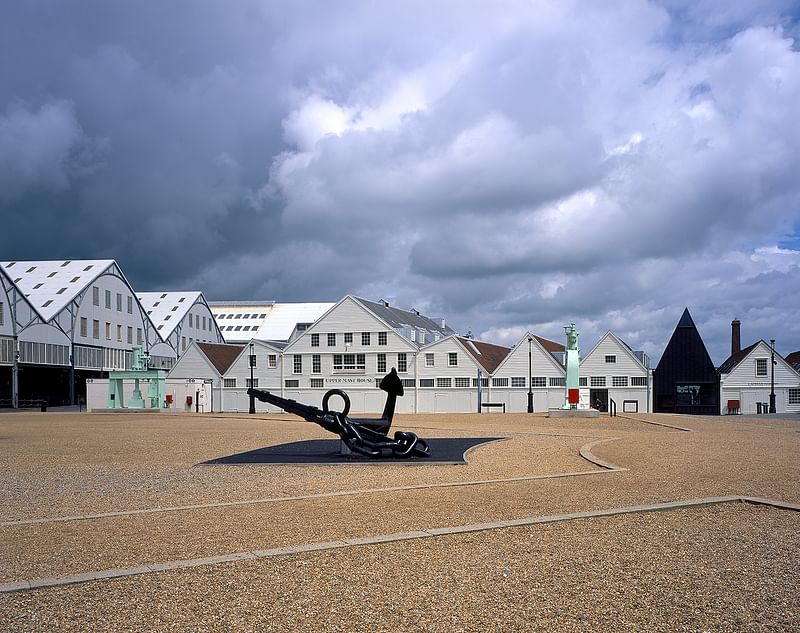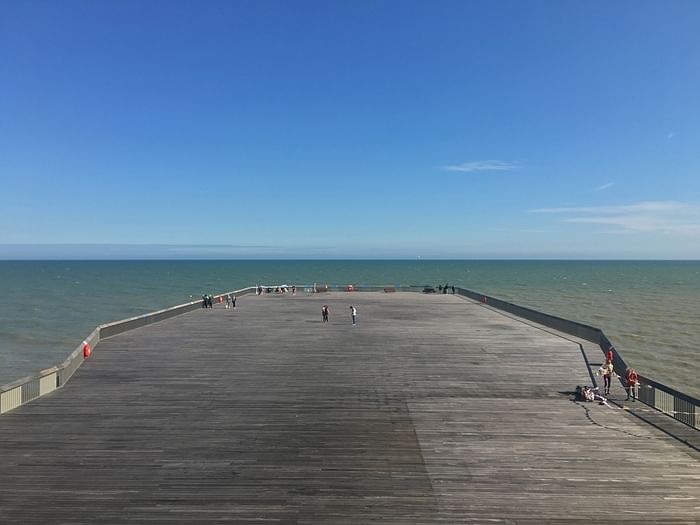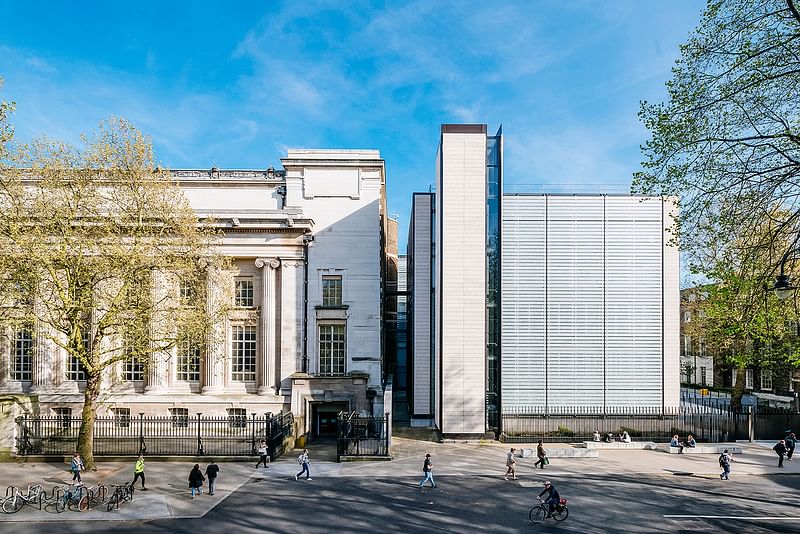
RIBA shortlists 6 buildings for 2017 Stirling Prize
By Anastasia Tokmakova|
Wednesday, Jul 19, 2017
Related
The winner of the 2017 RIBA Stirling Prize will be announced on Thursday, October 31 at the Roundhouse, London. The RIBA Stirling Prize is judged against a range of criteria including design vision; innovation and originality; capacity to stimulate, engage and delight occupants and visitors; accessibility and sustainability; how fit the building is for its purpose and the level of client satisfaction.
Most recently, RIBA revealed the six projects that will move on to compete for the grand prize. Two of the shortlisted projects — the City of Glasgow College - City Campus and the Photography Studio for Juergen Teller — were previously predicted on Archinect.

Barretts Grove by Amin Taha + Groupwork
Of brick, wood and straw, Barretts Grove is a characterful apartment building located adjacently to a primary school. Each of its generously proportioned apartments has a balcony.
The staggered hit-and-miss brick skin of the façade makes a larger-than-usual pattern, which fits the tallness of the overall building. Wrapping the skin up and over the roof, emphasizes the simplicity of the building’s form.

RELATED NEWS Step inside the perforated-brick Barrett's Grove, designed by Amin Taha + Groupwork

City of Glasgow College - City Campus by Reiach And Hall Architects and Michael Laird Architects
The merger of Glasgow’s central, metropolitan and nautical colleges brings together facilities and teaching previously housed in 11 separate buildings across the city within two new central campuses. City Campus, more than 60,000m2 in size, is the second of these large new buildings, combining six major faculties in 300 high-tech classrooms, multi-purpose lecture theatres and specialist teaching facilities.
While the initial impression of this building is as something of immense scale which also signals its presence as an important place of learning, its internal spaces are designed to encourage both the formal teaching processes which it contains and informal, more chance encounters. The materials palette and form of the building are deliberately restrained to generate something of skill, clarity and elegance, on the grandest scale.

Command of the Oceans by Baynes and Mitchell Architects
Bold yet modest, the building contrasts its neighbors in color and the pitch of its roof. The entrance obviously stands out on arrival in the large car park, which sits above the old mast pond; however in certain lights it seems to disappear and becomes very much subservient to the adjacent listed structures.
This project is a champion for progressive conservation, inventive re-use and adaptation of existing fabric. The importance of the historic fabric has been clearly understood, which has allowed freedom in other areas to change the circulation and the reading of the buildings to give the whole complex of buildings a new lease of life.

Hastings Pier by dRMM Architects
A seven-year collaboration between the community, the Council, the engineers and the architect, the project converted a pier in disrepair to a vibrant public space.
The new visitor centre replacing the weakest section of the damaged pier is a relatively simple CLT structure clad in reclaimed timber which was salvaged from the original fire-damaged pier. This helps to create a strong feeling of place and belonging. It boosts an elevated, rooftop belvedere where locals go for a coffee or cup of soup. It offers adaptable space for events, exhibitions and education. Reclaimed timber deck furniture was designed by dRMM and Hastings & Bexhill Wood Recycling as part of a local employment initiative.

RELATED NEWS dRMM Chosen for Hastings Pier Regeneration

Photography Studio for Juergen Teller by 6a architects
Comprising of a series of three buildings and gardens, the project forms a new studio, offices and archive for celebrated photographer Juergen Teller. The brief was for a light-filled, flexible, informal and welcoming set of spaces; with a natural flow and sociability.
The project is a mature and confident statement of orderliness and precision, whilst also being relaxed and playful. It forms a refined, yet flexible workplace, which is already beginning to act as a setting to prompt and influence on the work of its client.

The British Museum World Conservation and Exhibitions Centre by Rogers Stirk Harbour + Partners
Located on the north-west corner of the British Museum site in Bloomsbury, the WCEC building consists of five vertically linked pavilions (one of which is located entirely underground), and houses a new exhibition gallery, laboratories and conservation studios, storage, and facilities to support the Museum’ logistical requirements and loans programme.
This building is the realisation of an extremely complicated brief in terms of spatial challenges, technical requirements, and engineering technologies. Its achievement derives from the elegant and simple way these challenges are met, while maintaining a clear and coherent diagram and a refined and rational building enclosure.

RELATED NEWS Forty-nine winners announced for 2017 RIBA National Awards

RELATED NEWS David Chipperfield, WilkinsonEyre, Zaha Hadid, Grimshaw among shortlisted in RIBA 2017 London Awards


Share
0 Comments
Comment as :